History of Borjomi
 Bashny.Net
Bashny.Net
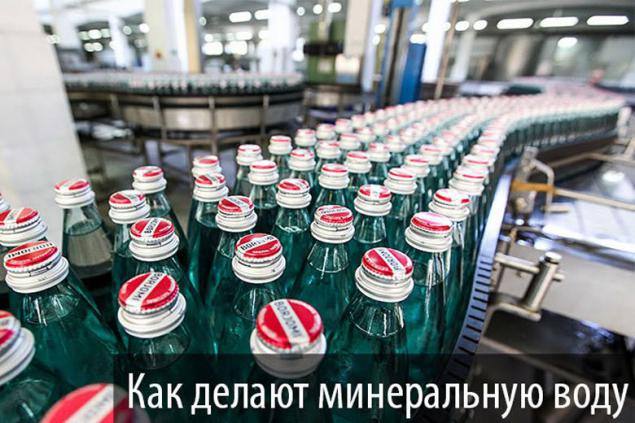
National Park Borjomi - Kharagauli covers an area of over 700 square kilometers and is considered the largest national park in Europe. Located at an altitude of 850 to 2500 meters above sea level.
The composition of the mineral water "Borjomi" has remained unchanged for over 100 years, as evidenced by regular examinations and tests that are carried out officially since 1890. Today mineral water "Borjomi" is identical to the one that was first poured on the first plant of Grand Duke Mikhail Romanov at the end of the XIX century.
Entrance to the plant begins with the story
In the nineteenth century, Borjomi was elected Caucasian residence of the imperial Romanov family, who are actively developing resorts. Borjomi as a resort appeared to create Russia's own "spa" resort like Baden-Baden. In 1850, already existed in the Borjomi mineral water park, and since 1890 has started to work the first bottling plant. In 2010, "Borjomi" said 120-year anniversary of the start of production.
In 1904 was partially mechanized production of "Borjomi". In 1854, of Borjomi was exported more than 1350 bottles. In 1905, after the establishment of export production has already reached 320,000 bottles, and in 1913, and at all has passed for 9 million.
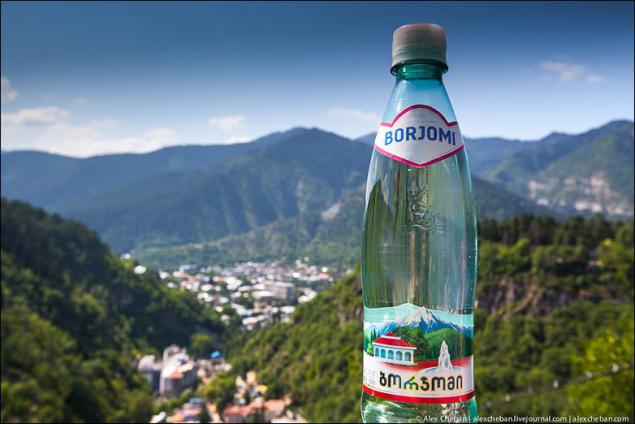
Sovietization of Georgia is not diminished the popularity of "Borjomi". Changed only the elite and the status of travelers: Romanova succeeded Stalin, who was also very fond of the water. The Kremlin did not carry out without the "Borjomi" single event.
"Thaw" of the 1960s gave "Borjomi" another chance to buy the name abroad. In 1961, 423,000 bottles of "Borjomi" were exported to 15 countries, including the US, France, Austria. In the 1980s, sales of "Borjomi" reached 400 million bottles, and this water was the most popular in the USSR.
From 1990-1995 he served. production was strongly reduced due to internal economic difficulties in Georgia. But since 1995, when the company «Georgian Glass & Mineral Water Co. NV »resumed production of" Borjomi "on two bottling plants, water production increased by 40 times.

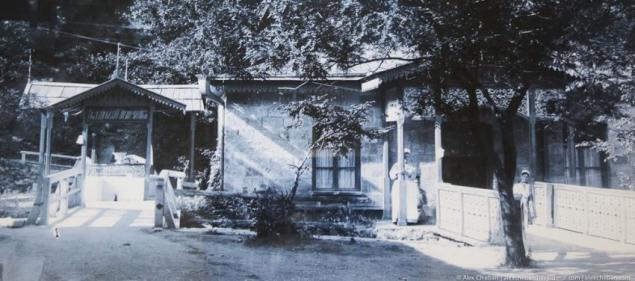
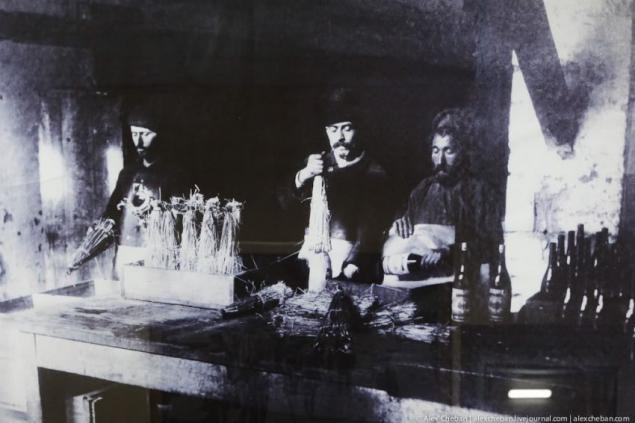
This is the original color photographs Prokudin-Gorsky:
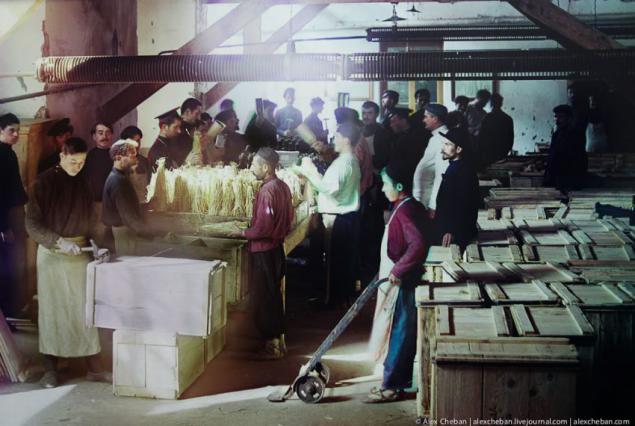
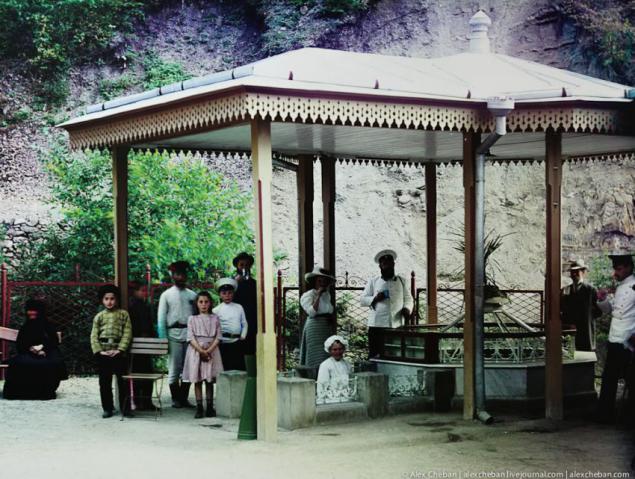
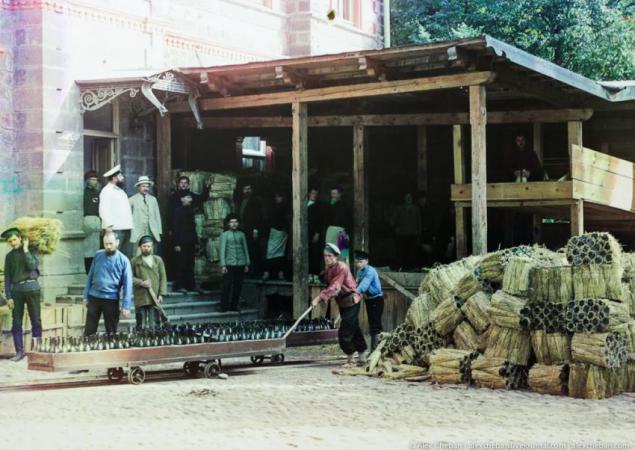
Here begins the Borjomi:
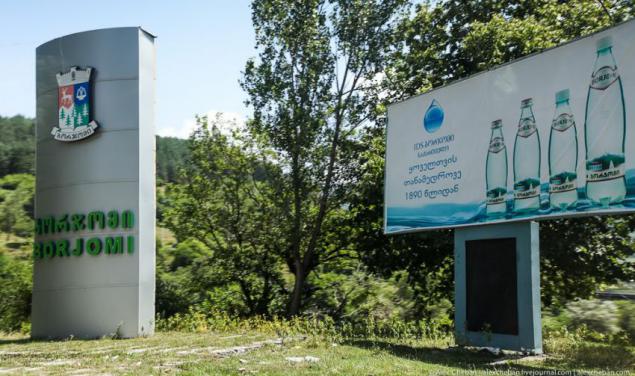
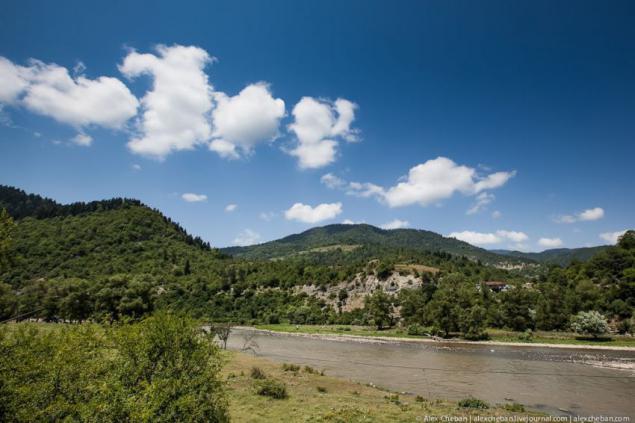
In Borjomi valley has two factories: "Borjomi-1" and "Borjomi-2", I visited both. But let's start with the second. It produces mineral water "Bakuriani" is negazirovanaya water bottled in plastic containers.
Plastic bottles are fed to the plant in the form of discs the size of an iPhone, called PET preforms:
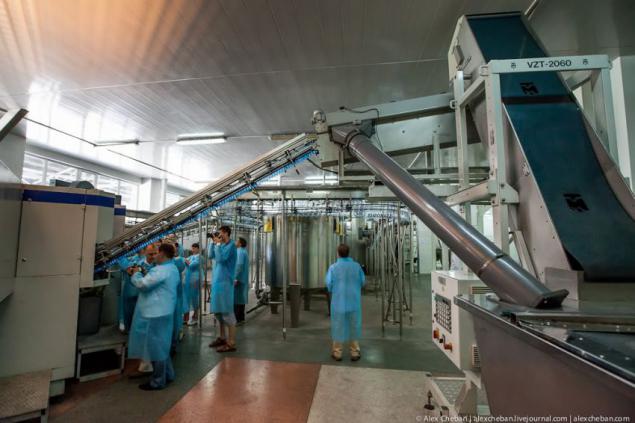
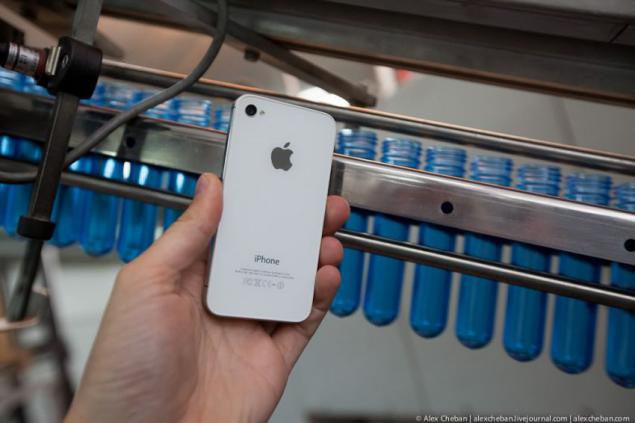
Then have blown bottle:


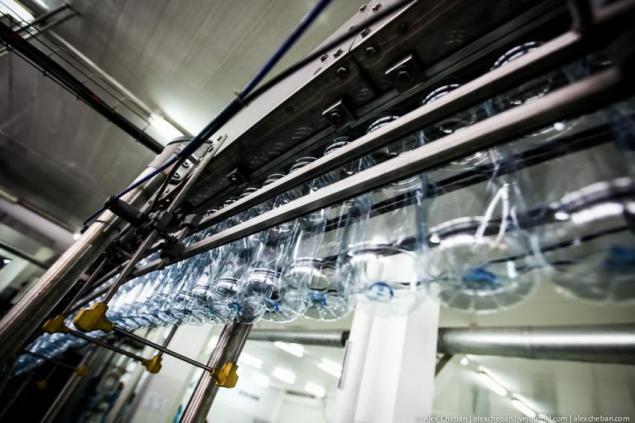
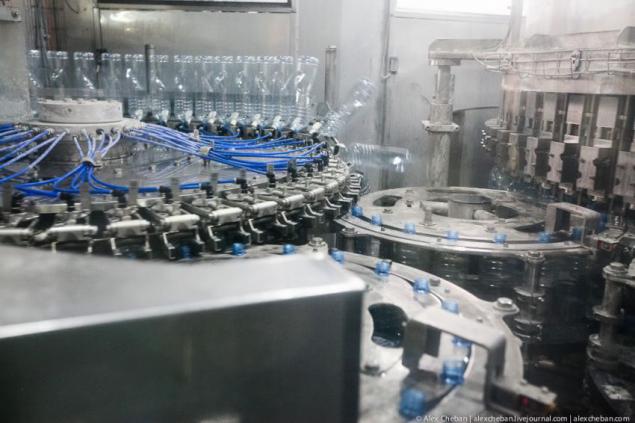
And filling with water:


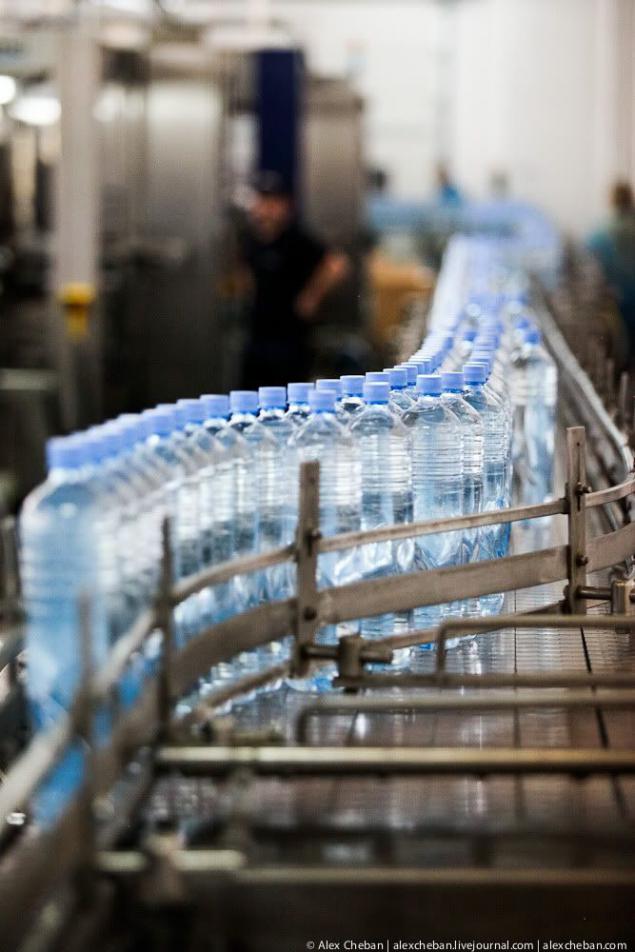
Everything under control:
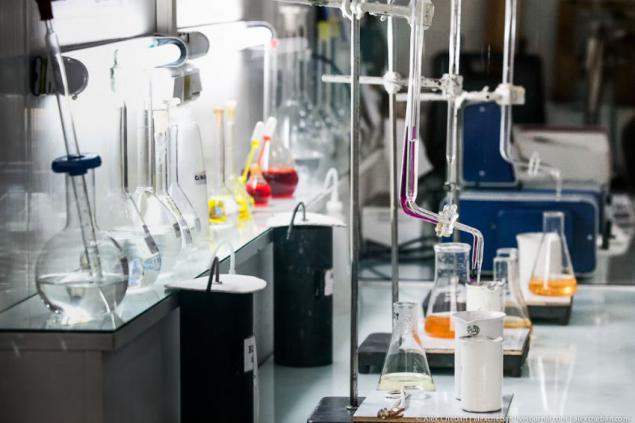

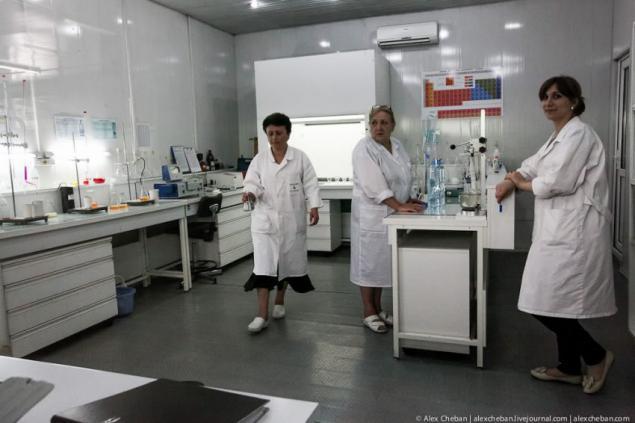
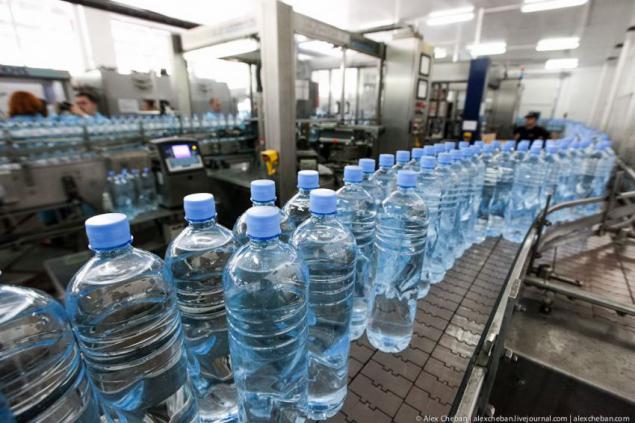
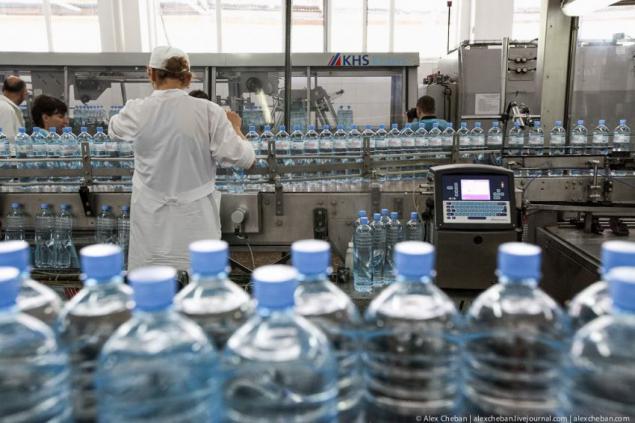
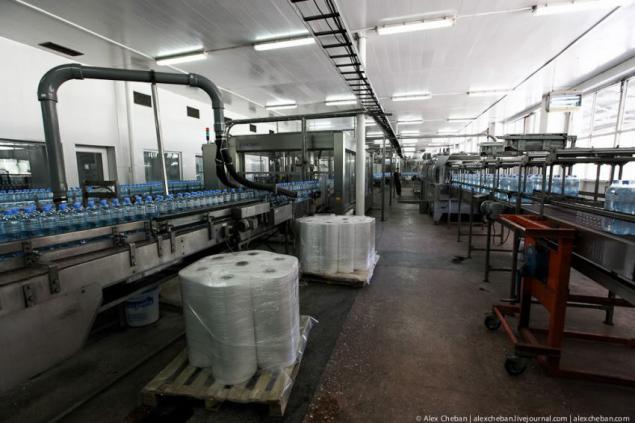

Sort bottles in blocks of 8 pieces:
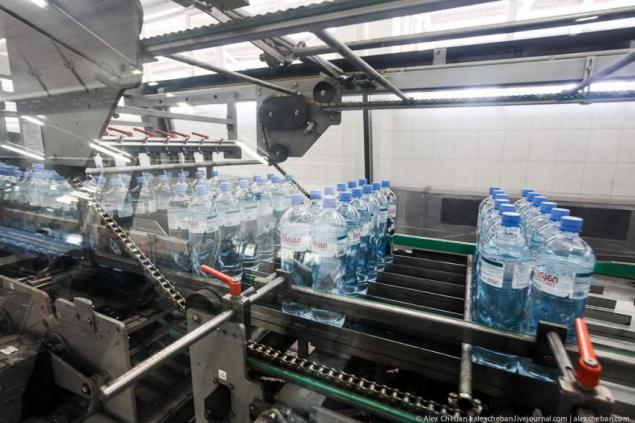
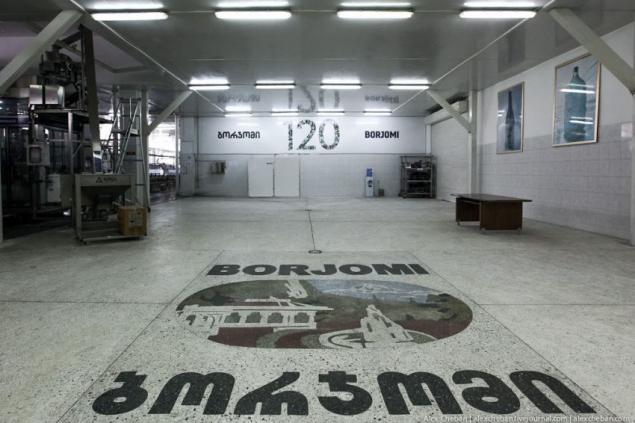
Plant outside:
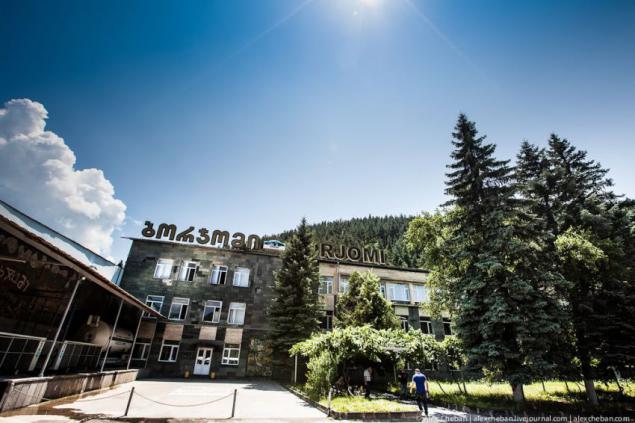
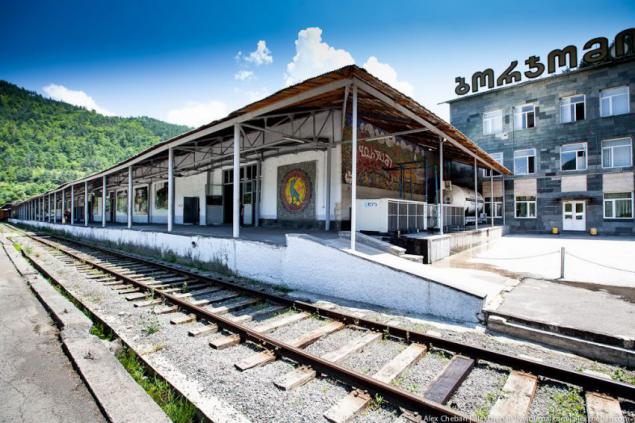
And now we move to the factory "Borjomi-1", which produces mineral water "Borjomi».
Borjomi was one of the candidate cities for the 2014 Olympic Games:
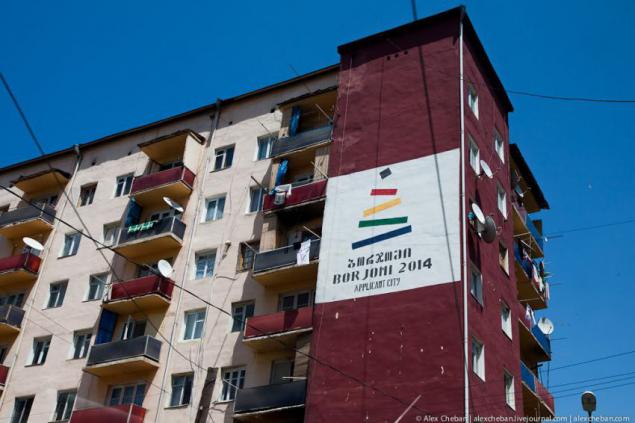
Borjomi mineral waters located in the central part of the Adjara-Imereti ridge of the Caucasus Mountains in Georgia, at the altitude of 760-920 meters above sea level. Mineral water "Borjomi" is extracted for bottling of nine wells located on the territory of the Borjomi reserve. The depth of the wells from 140 to 1500 m, but the emergence of "Borjomi" comes at a much greater depth - more than 8000m.
Due to the volcanic origin of mineral water "Borjomi", saturated with natural carbon dioxide, can rise to the surface without the aid of any pumps from a depth of 8-10 km warm stream (t 38-41S). "Borjomi" hits the surface of the earth, on the way enriched composition from more than 60 different minerals present in the volcanic rocks of the Caucasus Mountains. All wells operate in a mode of self-flowing, that is produced is the amount of water that is renewed by natural natural.
For visitors to open one of the wells, where you can taste the water. She is warm and smells of hydrogen sulfide, but the taste is absolutely identical to the bottle.
The water rises to the surface enriched with carbon dioxide, but according to the formulation is enriched with additional CO2.
Why? CO2 is a natural preservative and flavor enhancer. CO2 on plant uses natural Borjomi, which is produced at a nearby plant in the mountains. CO2 content in Borjomi average, and this is precisely the content of what it was 100 years ago. Therefore, there is no variation Borjomi "gas" or "non-carbonated". Single recipe from the start of production.
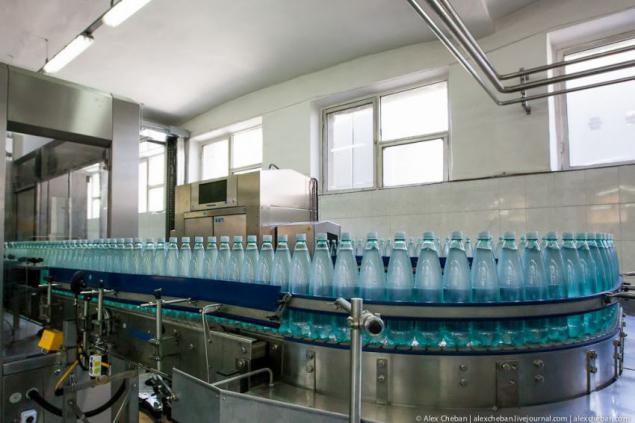
One of the protective properties of the bottle against forgery - silhouette of a deer. At the plant is not in use recycling glass, ie recycled of glass containers. Only new bottles. Preparation of glass for reuse - not a cheap pleasure.

Labels are placed exactly in the center of the bottle and deer, this is followed by a special mechanism with multiple cameras cost more than 200 thousand dollars. In an industrial scale to produce a fake simply unprofitable. The characteristic blue-green color of the bottle "Borjomi" is patented and even has its own name - «Georgian Green».

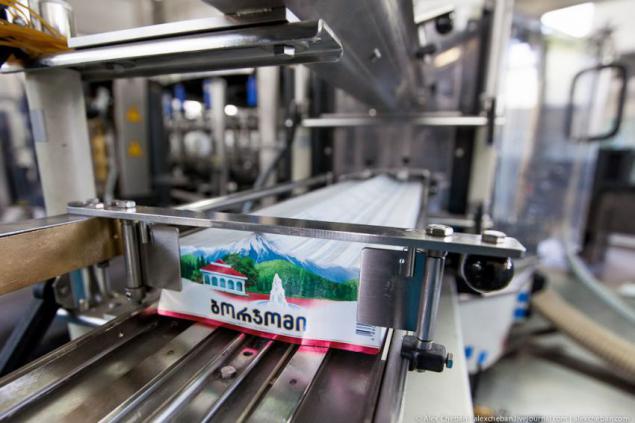

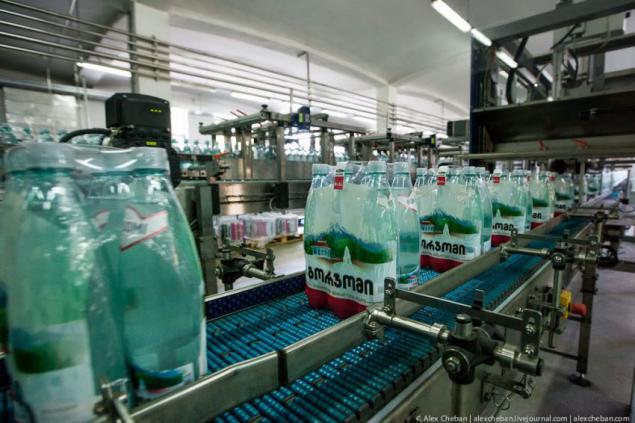
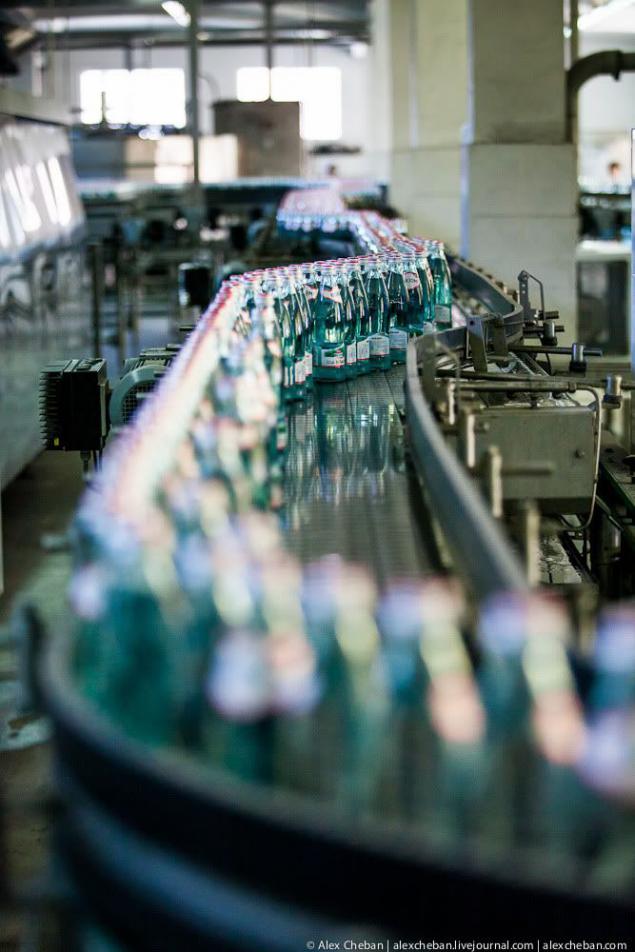
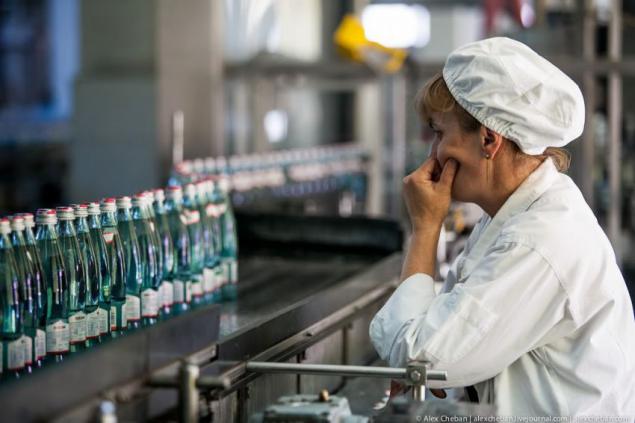
By the Numbers:
- Export is carried out in 40 countries
- 2/3 of production - is export
- Only produced 180 million liters per year, 130 of which - is Borjomi. The remaining 50 - "Bakuriani" and "Borjomi Springs».
- During the Soviet era was made up to 400 million liters per year
- The plant employs about 600 employees
- The sources are endless, according to geologists, the supply of water is more than 800 million liters per year
- All have 22 wells with depths ranging from 140 meters to 1, 5 km, 9 of them are actively used. The rest - well monitoring.
- Change of wells occurs every 30-50 years.
- During peak plants operate around the clock, normally 2-3 shifts a day.
In general, the production process is as follows:
- Passive outpouring of water from wells that are located within a radius of 25 km from the plant
- Active transport pumps water to the plants
- Extraction of hydrogen sulfide, sedimentation, water cooling
- Enrichment of natural CO2
- Bottling
IMPORTANT:
- Additional preservatives are not added
- Enrichment additional minerals not produced
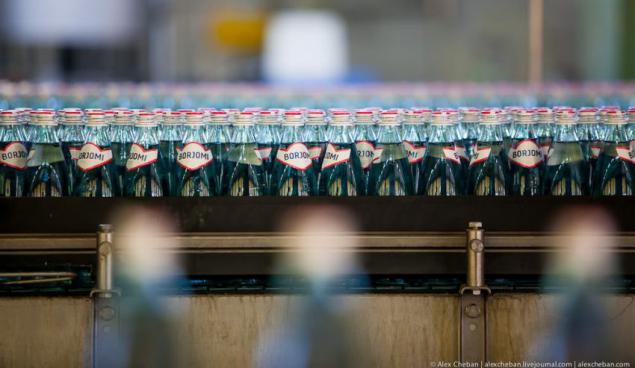
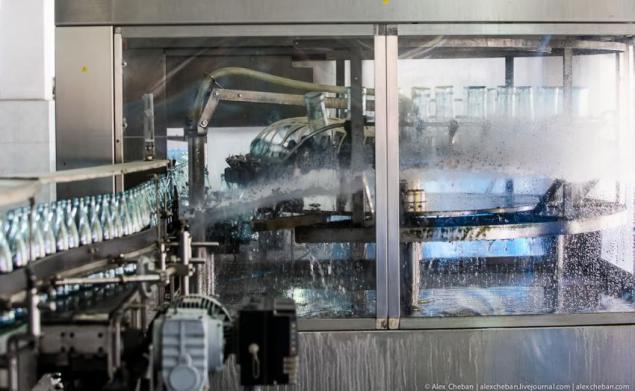
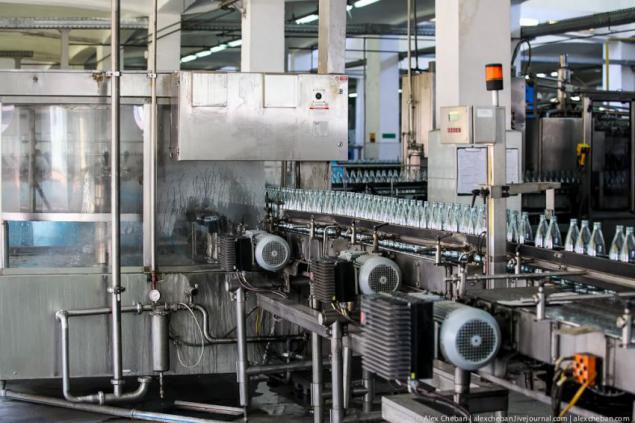

In May 2006, the Russian Federal Agency for Consumer Protection has imposed a ban on the sale to Russia of all products produced in Georgia, including "Borjomi". The formal reason - inconsistency product technical standards of the Russian Federation. Against the background of the disappearance from the market of Georgia began selling bottled water in Stavropol mineral water "Nagutskaya-26" called "Russian Borzhom", but in 2007 the court banned the sale of water under such a similar name on the claim of the Georgian producer of the original "Borjomi»
Loading into wagons and trailers happening in the old manual:
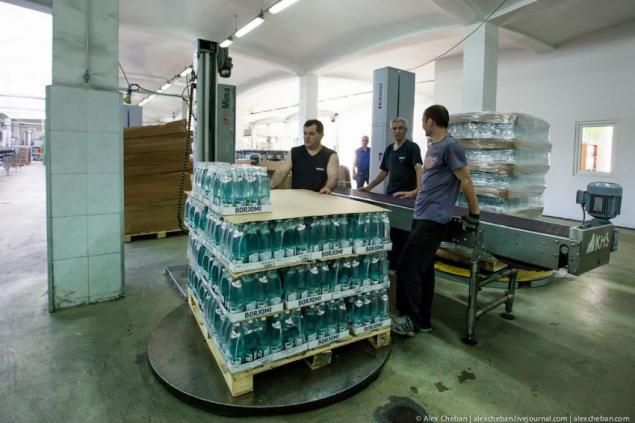
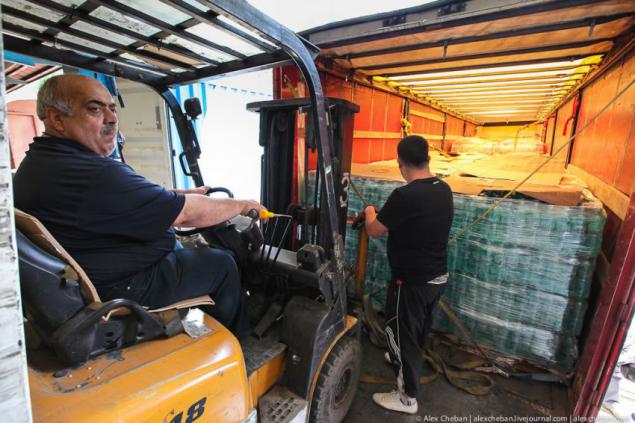
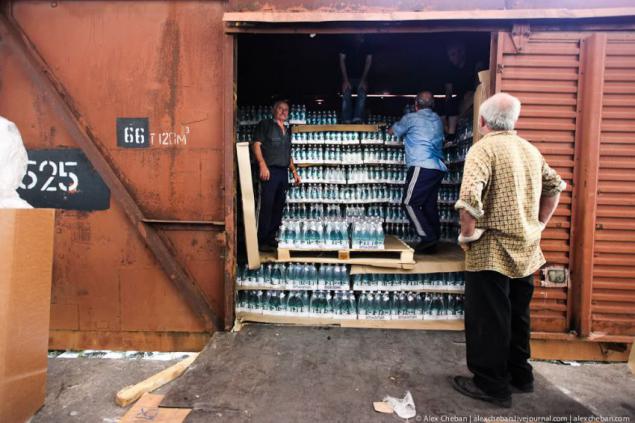
And a couple of the promised "questions with answers»:
Plastic or glass?
Water in any container is the same, as extracted from the same sources. Shelf life in the glass - 2 years in plastic - 1 year. The reason for the difference in time - the ability of the plastic to pass gas, which, over time, reduces the degree of aeration of the water, but even a year after aeration of water in the plastic is acceptable for the consumption rate. From the words of the plant's employees - they are very selective in the choice of suppliers of plastic food and preserve its reputation.
Can I drink Borjomi constantly?
The advantage of therapeutic mineral waters is their versatility: they can be used as a table drink for the prevention and systematically - for treatment. One of the causes of questions about the regular consumption of "Borjomi" - there is the presence of calcium in the water. But "Borjomi" amount of calcium is 100 mg / l, which is acceptable for daily use because the risk of salt deposition occurs only if the calcium content exceeds 200 mg / l.
This is David, who introduces us to the Georgian traditions and Leo:
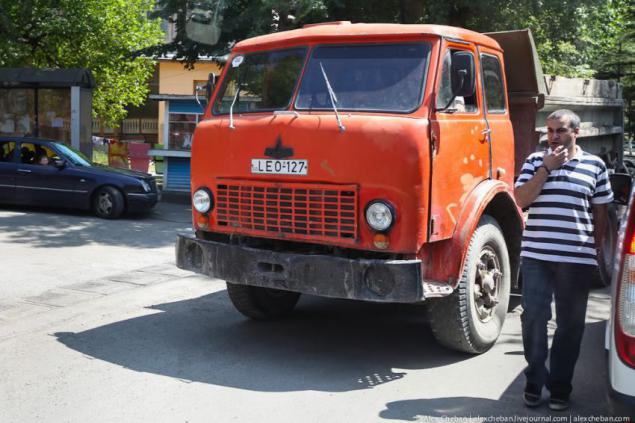
Home Georgian tradition - a meal and wine in a completely defies logic amounts:
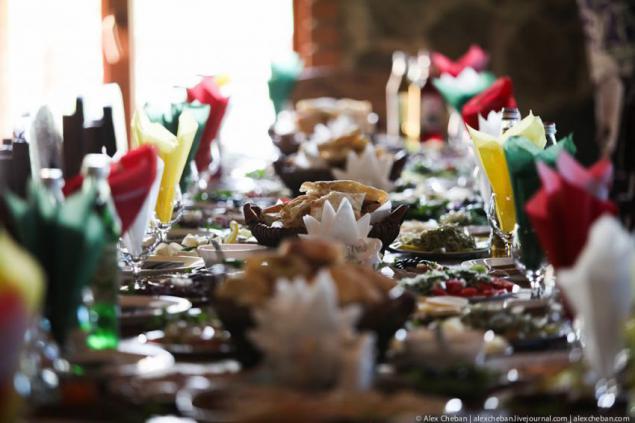
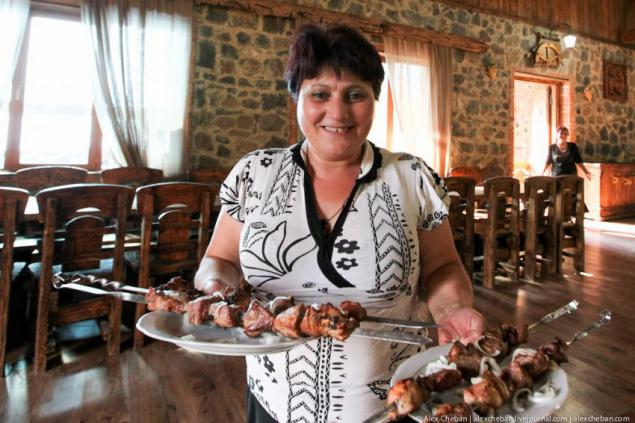
The wine should drink approximately as in this photo. After such a thermonuclear strike can only help Borjomi, whose slogan is "clean of excess»:
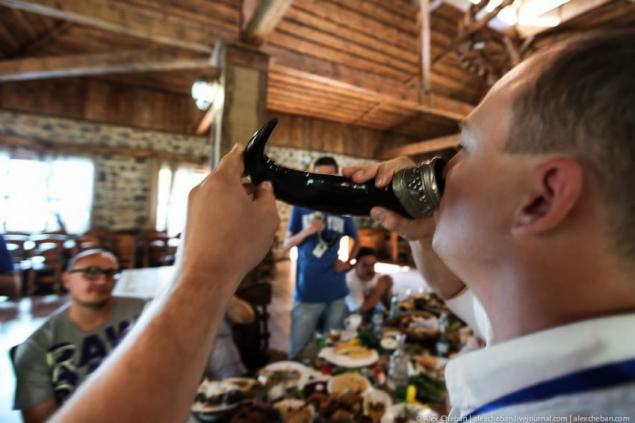
By the way, next is very sincere Borjomi Park.
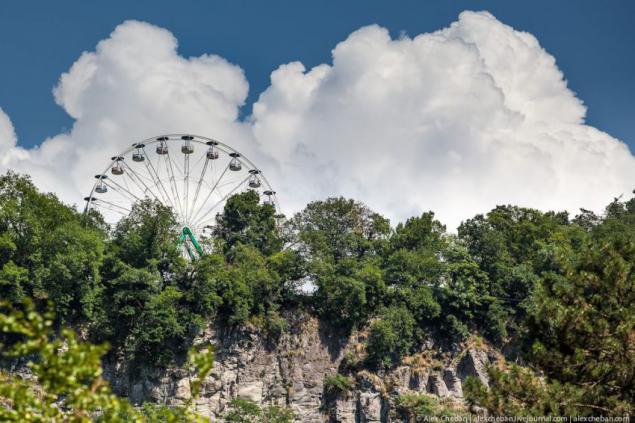
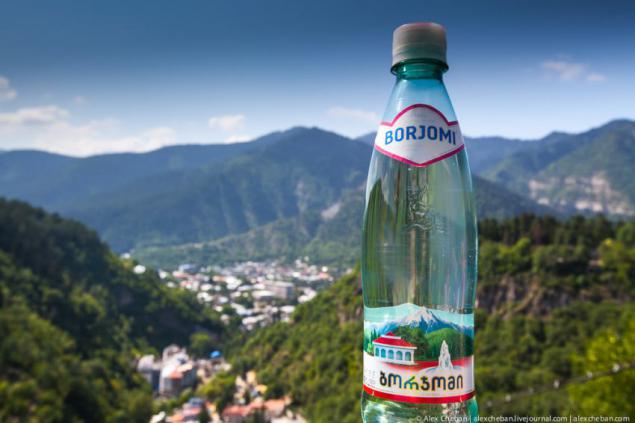
Source: escogido7.livejournal.com
Tags
See also
How does the Internet in the subway
Fake eggs from China: how to do it and how to spot a fake
How it's done. Wagon trains
How it works: Touchscreen
As I made Wi-Fi scales or where not quit, and generally keep quiet about life
Children adjustment: how it was (136 photos)
How to build UDC
How to collect APC
How do the pencils of Siberian cedar

















